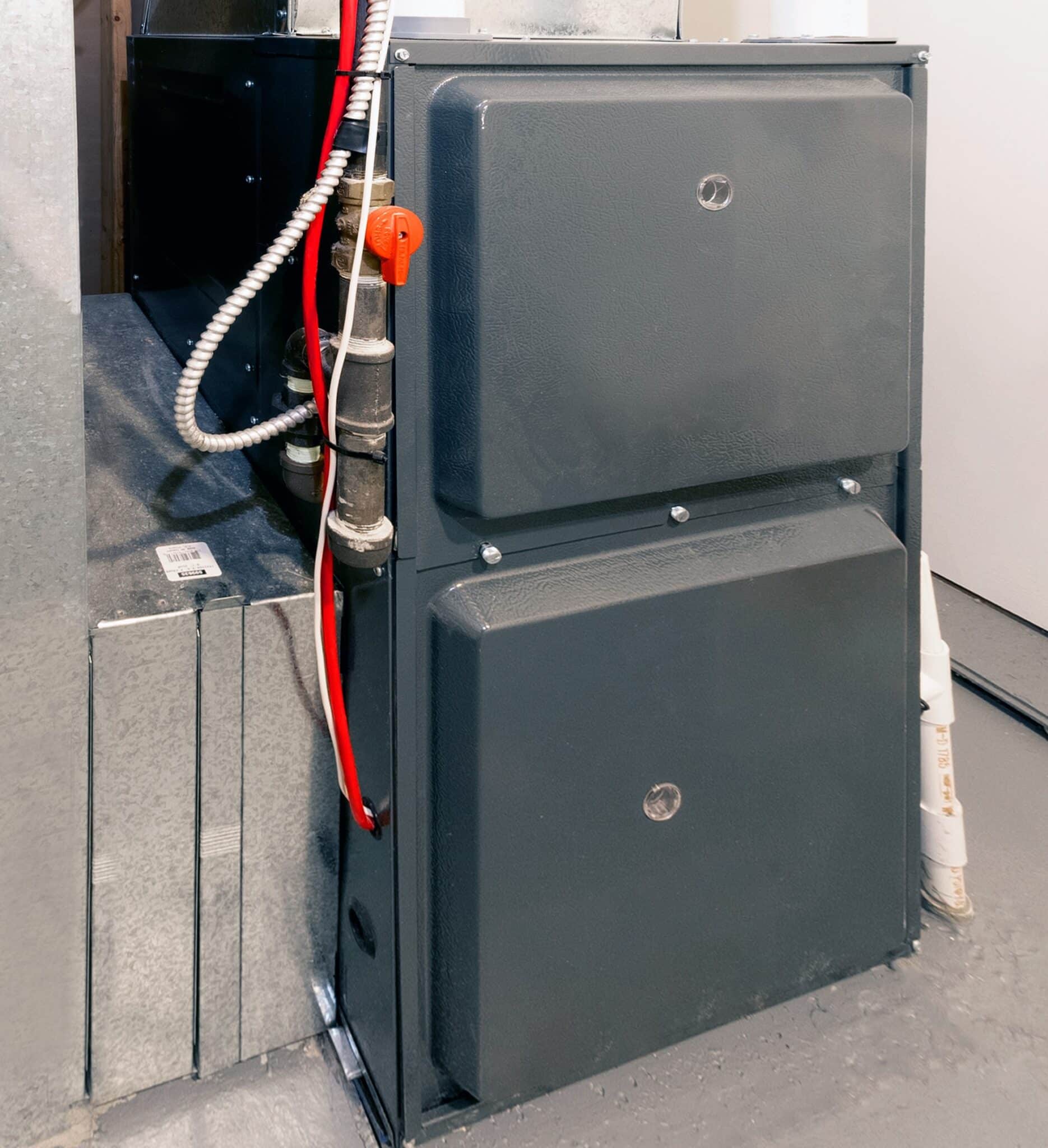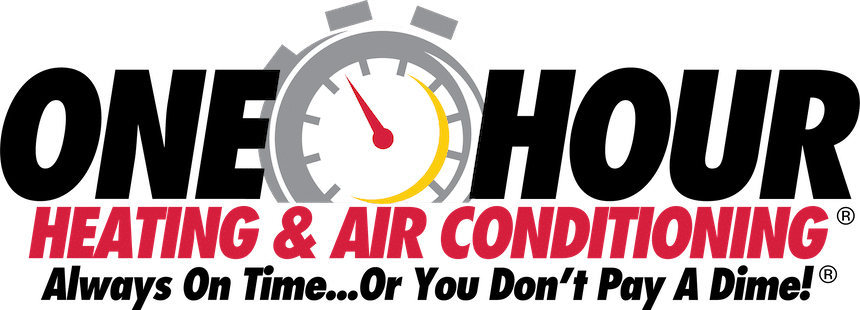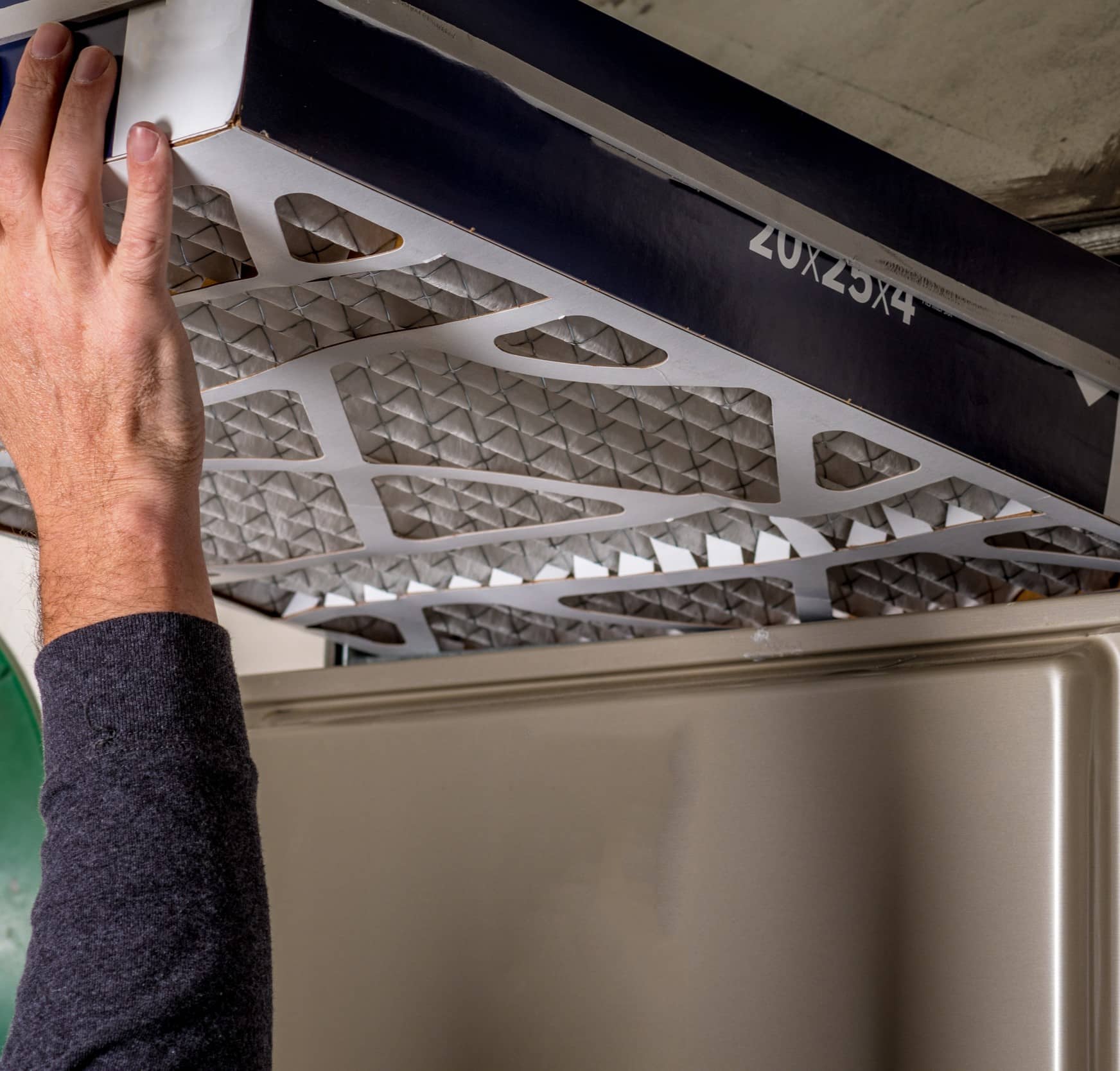- Ensure Your Furnace Runs Efficiently: Regular maintenance helps your furnace operate at peak efficiency, saving you money on energy bills.
- Prevent Costly Breakdowns: Annual inspections can catch small issues before they turn into expensive repairs or replacements.
- Extend Furnace Lifespan: Well-maintained furnaces last longer, delaying the need for costly replacements.
- Improve Indoor Air Quality: Regular cleaning and filter changes prevent dust, allergens, and pollutants from circulating in your home.
- Enhance Safety: Regular checks reduce risks such as carbon monoxide leaks, protecting your family’s health and safety.
Is your furnace ready to handle the upcoming winter? Regular furnace maintenance is essential for keeping your home warm and safe. By ensuring your system is in top condition, you not only extend its lifespan but also prevent unexpected breakdowns that can leave you in the cold. From improving energy efficiency to safeguarding your indoor air quality, annual maintenance is a small investment that offers significant returns. In this article, we’ll explore why routine furnace care is crucial and how it can save you money, time, and stress.
What Does Furnace Maintenance Involve?
Furnace maintenance is more than just a routine check-up; it’s a comprehensive process that ensures your heating system operates safely and efficiently throughout the colder months. Here’s what a typical maintenance visit includes:
- Filter Changes: The technician will replace or clean the furnace filters. Clean filters improve airflow, reduce strain on the system, and enhance indoor air quality by trapping dust and allergens.
- Thermostat Inspection: The thermostat is checked to ensure it’s properly calibrated and communicating accurately with the furnace, helping to maintain consistent temperatures.
- Safety Checks: This involves inspecting the heat exchanger for cracks, ensuring no carbon monoxide leaks, and checking all electrical connections for safety hazards.
- Burner and Flame Sensor Cleaning: These components are cleaned to ensure they are free from dust and debris, which can affect the furnace’s ability to ignite and maintain a steady flame.
- Blower Inspection: The blower motor and fan are inspected and cleaned. Proper airflow is essential for efficient heating, and a well-maintained blower ensures even distribution of warm air throughout your home.
- Lubrication of Moving Parts: Any moving parts, such as the blower motor bearings, are lubricated to reduce friction and prevent wear and tear, which extends the life of the components.
- System Efficiency Test: The technician will run the furnace to check that it starts, operates, and shuts off correctly. They’ll also measure the efficiency to ensure it’s heating your home effectively without wasting energy.
How Often Should You Service Your Furnace?
Yearly maintenance is the key to keeping your furnace in excellent condition. Just like a car, your furnace needs regular attention to run smoothly and efficiently. Experts recommend having your furnace serviced annually, ideally before the winter season starts. This timing ensures your system is prepared to handle the increased demand during colder months.
While an annual check-up is generally sufficient, there are certain signs that may indicate your furnace needs more frequent attention. If you notice unusual noises, uneven heating, or an unexpected spike in your energy bills, it could be time for an extra inspection. These symptoms often signal underlying issues that, if left unaddressed, can lead to more significant problems down the road.
Regular servicing not only keeps your furnace running efficiently but also extends its lifespan. Neglecting these maintenance tasks can result in a system that works harder to heat your home, leading to unnecessary wear and tear. In some cases, especially with older systems, more frequent servicing may be necessary to keep everything running smoothly.
Ultimately, staying on top of your furnace maintenance schedule is a small effort that pays off in big ways. It ensures your home remains warm and safe while avoiding the headaches of unexpected breakdowns and high repair costs.

Benefits of Annual Furnace Maintenance
Investing in annual furnace maintenance offers a range of benefits that go beyond just keeping your home warm. One of the most significant advantages is improved energy efficiency. A well-maintained furnace runs more efficiently, using less energy to produce the same amount of heat. This efficiency translates directly into cost savings on your energy bills, making your home more economical to heat during the winter months.
Another key benefit is the extended lifespan of your furnace. Regular maintenance helps identify and fix minor issues before they escalate into major problems that could lead to a complete system failure. By addressing these issues early, you ensure that your furnace remains in good working order for years to come, delaying the need for a costly replacement.
In addition to efficiency and longevity, annual maintenance also contributes to better indoor air quality. During a maintenance visit, technicians clean and replace filters, which prevents dust, allergens, and other pollutants from circulating throughout your home. This is especially important for households with members who suffer from allergies or respiratory issues.
Finally, regular maintenance ensures that your furnace operates safely. Technicians check for potential hazards, such as carbon monoxide leaks, and ensure that all components are functioning correctly. This proactive approach reduces the risk of dangerous malfunctions, providing peace of mind that your heating system is not only efficient but also safe.
Risks of Skipping Furnace Maintenance
Neglecting your furnace maintenance can lead to several serious consequences that affect both your comfort and your wallet. One of the most immediate risks is the increased likelihood of breakdowns. Without regular check-ups, minor issues can go unnoticed and develop into major problems, leading to sudden furnace failures, often at the most inconvenient times. Emergency repairs or replacements can be costly, and the discomfort of a cold home while waiting for service is something no one wants to experience.
Safety hazards are another critical concern. Furnaces that aren’t properly maintained pose risks like carbon monoxide leaks, which can be life-threatening. Carbon monoxide is an odorless, colorless gas, making it nearly impossible to detect without the right equipment. Regular maintenance includes safety checks that identify and fix potential leaks, protecting your family from this silent danger.
In addition to safety and reliability, neglecting maintenance can also hit you where it hurts: your energy bills. A furnace that isn’t running efficiently has to work harder to heat your home, leading to increased energy consumption. This not only raises your utility costs but also puts unnecessary strain on the system, potentially shortening its lifespan. Over time, the combination of higher bills and frequent repairs can end up costing you significantly more than the price of regular maintenance.
Skipping maintenance also affects your home’s air quality. A dirty furnace can circulate dust, allergens, and other pollutants throughout your home, leading to respiratory issues and discomfort, especially for those with allergies or asthma.
How Furnace Maintenance Saves Money
Investing in regular furnace maintenance is one of the most effective ways to save money on home heating. The most immediate financial benefit comes from improved energy efficiency. When your furnace is clean and well-maintained, it operates more efficiently, using less fuel or electricity to heat your home. This efficiency leads to lower energy bills, providing savings month after month, especially during the peak heating season.
Another way furnace maintenance saves you money is by preventing costly emergency repairs. A well-maintained furnace is less likely to break down unexpectedly. During routine maintenance, technicians can spot and fix small issues before they turn into major, expensive problems. This proactive approach helps you avoid the high costs associated with emergency service calls and parts replacements.
In addition to avoiding repairs, regular maintenance extends the lifespan of your furnace. Heating systems are a significant investment, and replacing a furnace can be a costly endeavor. By keeping your furnace in good working order, you delay the need for a new system, allowing you to get the most out of your current investment. Over the years, this can add up to substantial savings.
Choosing a Professional for Furnace Maintenance
Selecting the right HVAC professional for your furnace maintenance is crucial to ensuring your system’s longevity and efficiency. With so many options available, it can be challenging to know who to trust. However, a few key factors can help you make an informed decision.
First, always look for a licensed and certified technician. Certification ensures that the technician has the necessary training and knowledge to service your furnace correctly. A licensed professional is also more likely to stay updated on the latest industry standards and best practices, giving you peace of mind that your system is in good hands.
Experience is another important consideration. While newer companies may offer competitive rates, those with years of experience often bring a depth of knowledge that only time can provide. Experienced professionals are more likely to have encountered a wide range of furnace models and issues, allowing them to diagnose and fix problems quickly and effectively.
Reputation is equally important. Take the time to read reviews and ask for recommendations from friends or family. A company with a strong reputation for customer service and quality work is more likely to deliver a positive experience. Don’t hesitate to ask potential service providers for references or to provide testimonials from previous clients.
When interviewing a potential HVAC technician, ask about their maintenance process. A thorough maintenance visit should include checking and cleaning the key components of your furnace, such as the filters, burners, and heat exchanger. The technician should also conduct safety checks and measure the system’s efficiency. If a provider seems vague or unwilling to explain their process, it might be best to look elsewhere.
DIY Furnace Maintenance Tips
While professional furnace maintenance is essential, there are a few simple tasks you can perform yourself to keep your system running smoothly between service visits. These DIY tasks not only help maintain efficiency but also prevent minor issues from becoming major problems.
One of the most important things you can do is regularly change your furnace filters. Depending on the type of filter and how often your furnace is used, you should aim to replace or clean the filter every one to three months. A clean filter improves airflow, reduces strain on the system, and helps maintain good indoor air quality. It’s a quick and inexpensive task that makes a big difference in your furnace’s performance.
Another easy maintenance task is to keep the area around your furnace clear. Ensure there is at least a three-foot clearance around the furnace to allow proper airflow and to prevent fire hazards. Avoid storing flammable materials like cardboard boxes or cleaning supplies near the furnace. This simple step can help ensure safe operation.
Inspecting your thermostat is another simple check you can perform. Make sure it’s set to the correct mode and temperature, and that it responds when adjusted. If you have an older thermostat, consider upgrading to a programmable or smart thermostat, which can improve efficiency and help reduce your energy bills.
You should also listen to your furnace when it’s running. Unusual noises, like banging, rattling, or squealing, can be early indicators of a problem. If you hear anything out of the ordinary, it’s best to call a professional for an inspection before the issue worsens.
Seasonal Furnace Maintenance Checklist
Keeping your furnace in top shape requires attention throughout the year, not just when the cold weather hits. By following a seasonal maintenance checklist, you can ensure your system operates efficiently and reliably whenever you need it. Here’s a month-by-month guide to help you stay on top of furnace maintenance.
Spring:
- After the winter season ends, give your furnace a break. Schedule a professional maintenance visit to inspect and clean the system, addressing any issues that may have developed during the heavy-use months.
- Replace the furnace filter to remove any buildup of dust and debris from the winter.
- Check your thermostat settings and consider adjusting them for the warmer months, or switch to cooling mode if you have a combined heating and cooling system.
Summer:
- During the summer, your furnace gets a well-deserved rest. However, this is a good time to clean around the furnace and make sure the area is free of clutter.
- Inspect the ventilation system for any blockages or debris, especially if you’ve been using the air conditioning, as the ductwork is shared.
- Take note of any odd smells or noises that might have gone unnoticed during the winter and plan to address them before the next heating season.
Fall:
- Early fall is the perfect time to schedule your annual professional maintenance visit. The technician will perform a thorough inspection and tune-up, ensuring your furnace is ready for the colder months ahead.
- Replace the furnace filter again to prepare for increased use.
- Test your thermostat and smoke/carbon monoxide detectors to ensure they are functioning correctly. Replace batteries if needed.
Winter:
- Throughout the winter, regularly check and replace the furnace filter every 1-2 months, depending on usage and filter type.
- Keep an eye on your energy bills; a sudden spike could indicate that your furnace is working harder than it should be, possibly due to a maintenance issue.
- Listen for any unusual noises and check that your home is heating evenly. If you notice cold spots or inconsistent temperatures, it may be time to call a professional for an inspection.

Furnace Maintenance for Different Types of Systems
Not all furnaces are the same, and the type of system you have will determine the specific maintenance tasks required. Whether you have a gas, electric, or older furnace system, understanding the unique needs of your setup is essential for keeping it running efficiently and safely.
Gas Furnaces:
Gas furnaces are among the most common heating systems in homes today. They rely on natural gas or propane to produce heat. Because gas furnaces involve combustion, they require specific safety checks during maintenance.
One critical task is inspecting the heat exchanger for cracks or leaks, as a damaged heat exchanger can lead to dangerous carbon monoxide leaks. Additionally, the burner and pilot light must be cleaned and adjusted to ensure efficient combustion. Regularly checking and cleaning the vent system is also important to prevent blockages that could cause harmful gases to back up into your home.
Electric Furnaces:
Electric furnaces, while generally requiring less maintenance than gas models, still need regular care to operate efficiently. These systems use electric heating elements to warm the air, which means there’s no combustion process. However, it’s important to check the electrical connections during maintenance to ensure they are secure and free from corrosion. The blower motor and fan should also be inspected and cleaned to ensure proper airflow. Because electric furnaces can sometimes have higher operational costs, keeping the system clean and efficient is crucial for managing energy consumption.
Older Furnace Systems:
If your home has an older furnace, whether gas or electric, maintenance becomes even more critical. Older systems are more prone to wear and tear, and parts may be more difficult to replace if they fail. Regular maintenance can help extend the life of these systems, but it’s important to be aware of signs that indicate it may be time for an upgrade, such as frequent breakdowns, uneven heating, or rising energy costs. For older gas furnaces, additional attention should be given to the heat exchanger and vent system, as these components can become particularly vulnerable over time.
Regular furnace maintenance is essential for ensuring your system runs efficiently, safely, and for as long as possible. Whether you’re in Hinesville, Brunswick, or St. Simons Island, keeping up with annual inspections and addressing local climate challenges can prevent costly repairs and ensure your home stays comfortable throughout the winter.
Frequently Asked Questions (FAQs)
-
How much does furnace maintenance cost?
Furnace maintenance costs depend on the service provider and the complexity of the system.
-
Can I do furnace maintenance myself?
You can perform basic tasks like changing filters and clearing debris, but professional maintenance is recommended for thorough inspections and safety checks.
-
How long does a furnace maintenance visit take?
A standard maintenance visit usually takes about 1 to 2 hours, depending on the condition of your furnace.
-
How often should I replace my furnace filter?
Filters should be replaced every 1 to 3 months, depending on usage and the type of filter.
-
What are the signs my furnace needs maintenance?
Common signs include unusual noises, uneven heating, frequent cycling, and higher energy bills.











